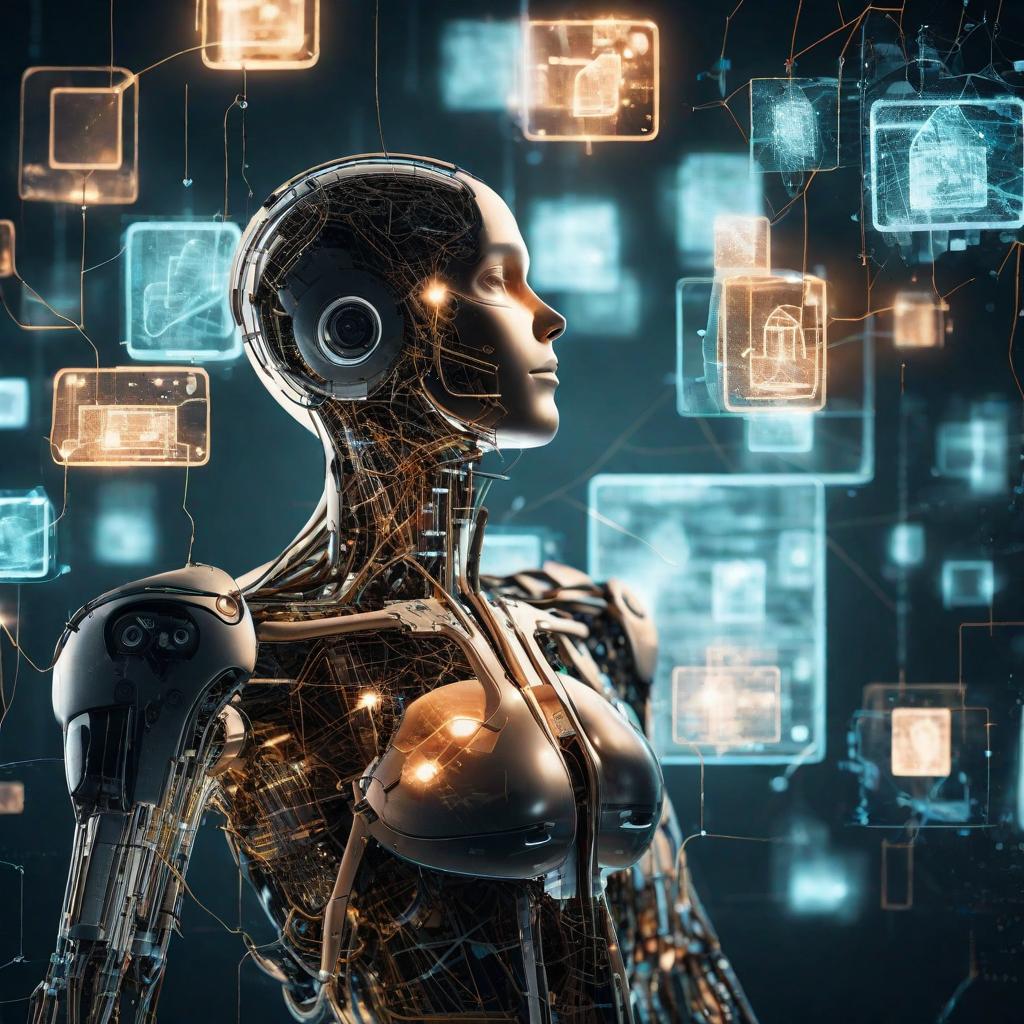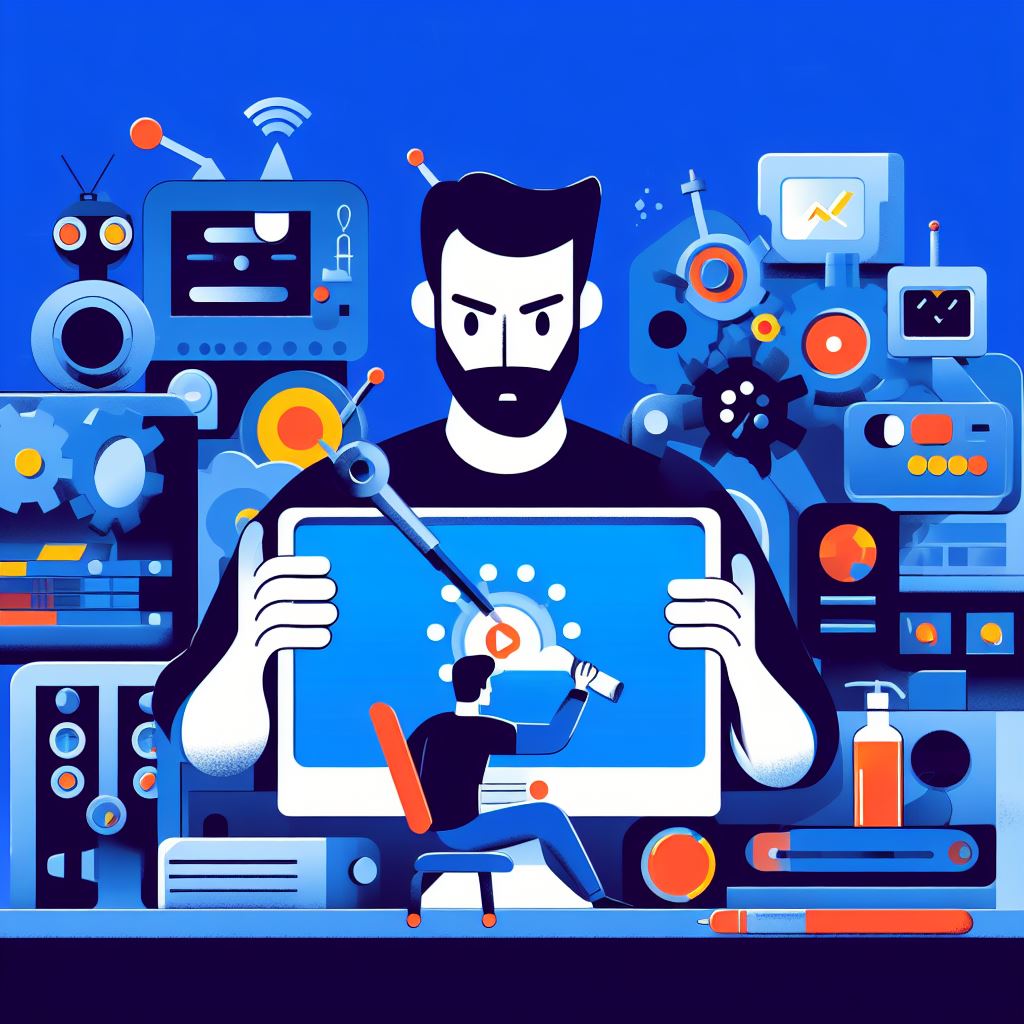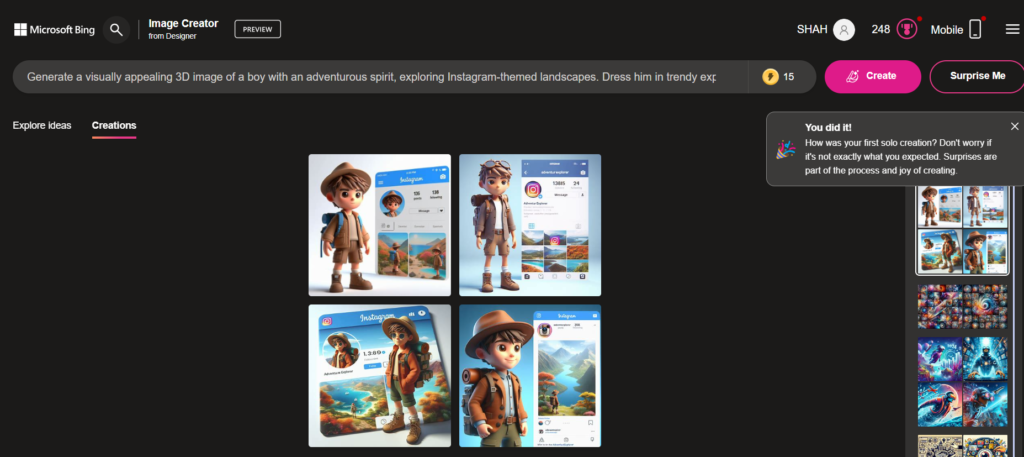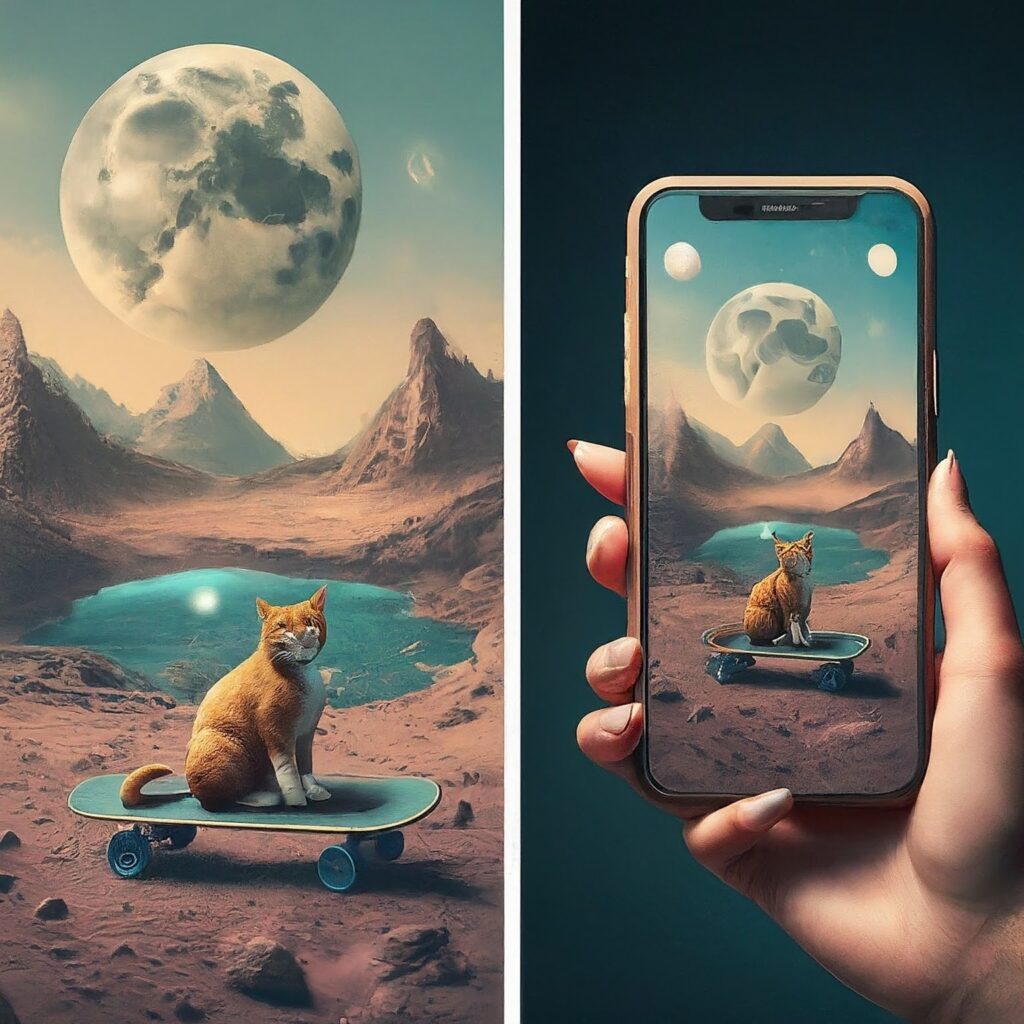
How to Detect AI-Generated Text
The development of artificial intelligence (AI) has affected many facets of our life, including the production of information. Although there is no denying the benefits of AI writing aids, there are also worries about the abuse and ethical ramifications of AI-generated material. Recognizing such texts is important for a number of reasons, including content authenticity and academic integrity. This blog article explores efficient techniques for identifying text created by artificial intelligence (AI), giving you useful tools and knowledge for the modern information age.
Understanding AI-Generated Text:
Understanding what AI-generated text comprises is crucial before diving into detection techniques. These writings are the result of AI models that were trained on enormous textual content databases. These models can produce content that is human-like, from basic sentences to intricate essays, by learning statistical correlations between words and phrases.
Challenges of AI Text Detection:
Due to the ongoing improvements in AI writing skills, it can be difficult to distinguish between material created by the system and information produced by humans. As a result of these algorithms’ rising proficiency at imitating human writing styles and adding real information, content-based detection is getting more and more challenging.
Methods for Detecting AI-Generated Text:
Here are various approaches to identifying AI-generated text, each with its advantages and limitations:
In this article
- How Can I Tell Whether Some Content Was Created by AI?
- What are the AI-generated text’s key indicators?
- Is it Possible to Identify AI-Written Content with Certain Tools or Methods?
- How Is Content Created by AI Different From Content Written by Humans?
- How Can I Recognize Art Produced by AI?
- Frequently Asked Questions on How to Detect AI-Generated Text?
Generative Artificial Intelligence (AI) models mark a notable technological achievement, aiding in content creation and enhancing the quality of human-generated text. Nevertheless, they introduce various risks, including the spread of fake news, image manipulation, increased cyberattacks, and data breaches. Instances of generative AI producing socially biased content have also surfaced. Consequently, responsible usage of this technology has become paramount, leading us to the question: How can one discern AI-generated content?
How Can I Tell Whether Some Content Was Created by AI?

1. Utilizing AI Detection Tools:
There are a number of software applications and internet tools available that are especially made to identify AI-generated material. These tools use a variety of algorithms to examine textual elements and spot trends that point to the creation of artificial intelligence. Several well-liked choices consist of:
- Originality.ai: Using statistical abnormalities and stylistic elements frequently linked to AI-generated material, this program examines text. It offers a thorough analysis emphasizing probable AI indicators and the probability of AI authorship.
- Copyleaks: This program has features for both plagiarism checking and AI content identification. With varied degrees of certainty, it uses sophisticated algorithms to examine language patterns and identify information written by AI.
- Sapling: This AI content detector is renowned for its exceptional accuracy in identifying possible AI creation from even brief text passages.
2. Examining Textual Features:
Even if AI writing has advanced greatly, there are still some traits that can identify an AI author. The following are warning signs to be aware of:
- Repetitive phrasing: Because of their training data, AI models may utilize particular words or sentence patterns excessively. Keep an eye out for overuse of particular terms or phrases, since this may indicate the use of artificial intelligence.
- Grammatical correctness without stylistic nuance: While AI models can produce language that is technically correct, they might not be able to replicate the intricacies and stylistic variances of human writing. Keep an eye out for too generic phrase patterns or a lack of writing flow.
- Factual accuracy with lack of depth or insight: Because AI is trained on large datasets, information created by it can be factually correct. It could, however, lack the complexity, insightful analysis, and original ideas that characterize material produced by humans.
- Inconsistencies in tone or voice: AI models could find it difficult to keep a piece’s voice and tone constant, especially in lengthier pieces. Keep an eye out for abrupt changes in formality, style, or viewpoint that may point to AI authorship.
3. Considering Context and Source:
Important hints can also be found in the text’s source and context. In the event that the text comes from an unidentified or dubious source, the probability of AI development rises. Take into account the text’s objective as well. It may have been created by AI if it is extremely promotional, unimaginative, or lacks a distinct authorial voice.
4. Leveraging Human Expertise:
Although AI analysis and detection techniques are useful, human skill is still essential. Expert writers, editors, and critical thinkers are frequently able to spot contradictions, shallow writing, and other subtle clues that AI models can overlook. The identification of AI-generated text can be made more accurate by combining human judgment with automatic detection.
Remember:
- No single method is perfect. Using a combination of strategies is often recommended.
- AI detection tools have limitations:
- New AI models are constantly evolving, making detection more challenging.
- Tools might misinterpret human-written content or miss sophisticated AI-generated text.
- Be a discerning consumer of information:
- Consider the source and context of the content.
- Develop critical thinking skills to evaluate the information presented.
By employing these methods and maintaining a healthy dose of skepticism, you can become more adept at navigating the ever-evolving digital landscape and identifying AI-generated content.
Ethical Considerations and the Future:
As AI writing skills advance, so too will the techniques for identifying AI-generated text need to change. It’s critical to keep in mind that information produced by AI isn’t always harmful. Transparency and moral concerns, however, are essential. It is unethical and dangerous to use AI content without properly disclosing its use or claiming human writers.
Being able to recognize text produced by artificial intelligence (AI) enables people to be astute information consumers in the digital era. You may improve your ability to recognize AI-generated material and move more critically and aware across the changing information landscape by being aware of the following approaches and constraints.
What are the AI-generated text’s key indicators?

While no single indicator definitively confirms AI-generated text, several key characteristics can raise suspicion:
1. Language and Style:
- Repetitive phrasing: AI models may overuse certain words, phrases, or sentence structures due to their training data. Look for excessive repetition of specific vocabulary or phrasings throughout the text.
- Grammatical correctness without stylistic nuance: While grammatically sound, AI-generated text often lacks the subtle nuances and stylistic variations found in human writing. Be wary of overly generic sentence structures or a lack of natural flow in the writing.
- Inconsistent tone or voice: Especially in longer texts, AI models may struggle to maintain consistent tone and voice throughout the content. Look for sudden shifts in formality, style, or perspective, potentially indicating AI authorship.
2. Content and Information:
- Factual accuracy with lack of depth or insight: AI-generated content can be factually accurate due to its vast dataset training. However, it may lack the depth, critical analysis, and unique insights often present in human-written content. Be cautious of content that seems factually accurate but lacks original analysis or deeper exploration of the topic.
- Unusual word choices or phrasings: AI models may occasionally generate text with awkward phrasing or word choices that seem out of place in the context. This can be a sign that the model struggled to understand or properly utilize the nuances of human language.
- Lack of personal experience or emotional connection: Human writing often incorporates personal experiences, anecdotes, or emotional connections to engage the reader. AI-generated content, due to its reliance on data, often lacks these personal elements, resulting in a somewhat sterile or detached tone.
3. Contextual Inconsistencies:
- Sudden shifts in topic or focus: AI models might struggle with maintaining coherence and context, especially in longer pieces. Look for abrupt changes in the topic, focus, or flow of information, which can indicate AI struggling to keep track of the narrative or argument.
- Excessive detail or lack of depth: AI models can sometimes include excessive details irrelevant to the main point or lack the necessary depth and context to fully understand the topic. This inconsistency in information presentation can be a sign of AI generation.
Recall that AI writing abilities are always changing, thus these signs are not infallible. Effectively detecting AI-generated writing requires combining these findings with critical thinking as well as taking the content’s source and context into consideration.
Is it Possible to Identify AI-Written Content with Certain Tools or Methods?
With the right tools and techniques, it is feasible to recognize information that has been authored by artificial intelligence (AI), but it is crucial to realize that no technique is infallible and that total accuracy cannot be assured. Below is an overview of the present situation:
Available Tools and Methods:
- AI Detection Tools: Several online tools and software programs specialize in analyzing text and identifying patterns indicative of AI authorship. These tools use various algorithms to scan for characteristics like repetitive phrasing, unusual word choices, or inconsistencies in style and tone. Popular options include Originality.ai, Copyleaks , and Sapling.
- Manual Analysis: Scrutinizing the text for specific red flags can also be helpful. This involves looking for signs like:
- Repetitive phrasing: Excessive repetition of specific words or phrases might indicate AI mimicking patterns from its training data.
- Grammatical correctness without stylistic nuance: While grammatically sound, AI-generated content often lacks the natural flow and subtle stylistic variations found in human writing.
- Factual accuracy with lack of depth or insight: Though factually accurate, AI-generated content might lack the depth, critical analysis, and unique insights often present in human-written work.
- Inconsistency in tone or voice: Especially in longer texts, AI models may struggle to maintain a consistent tone and voice, potentially exhibiting sudden shifts in formality or style.
- Considering Context and Source: Important hints can be obtained from the content’s source and context. Content from unidentified or dubious sources should be avoided since AI development is becoming more likely. Take into account the text’s objective as well. It may have been created by AI if it is extremely promotional, unimaginative, or lacks a distinct authorial voice.
Limitations and Challenges:
- Continuous Evolution of AI: As AI writing models constantly evolve, their ability to mimic human writing styles improves, making detection more challenging.
- Misinterpretations and Errors: Detection tools might misinterpret human-written content or miss sophisticated AI-generated text, leading to potential inaccuracies.
- Limited Scope of Analysis: Both tools and manual analysis primarily focus on the textual aspects of content. They might not always capture the nuances of deeper meaning, logic, or argumentation, which can be crucial for identifying AI-generated content that is factually accurate but lacks originality or critical thinking.
How Is Content Created by AI Different From Content Written by Humans?
Although both AI and humans are capable of producing engaging material, there are important distinctions between their methods and the finished product:
Source of Information and Inspiration:
- Humans: Use their own experiences, wisdom, feelings, and inventiveness as sources of inspiration. To help them write better, they can draw on observations, research, and a variety of viewpoints.
- AI: Uses enormous text and code datasets as its training source. Its inventiveness is restricted to recycling and reorganizing preexisting data inside the constraints of its training set.
Style and Tone:
- Humans: Able to modify their tone and style according to the target audience, the content’s aim, and its genre. To emotionally connect with readers, they can employ wit, comedy, and personal tales.
- AI: May struggle with maintaining consistent style and tone, especially in longer pieces. Its writing can often appear formulaic and lack the nuanced variations and emotional connection found in human writing.
Depth and Insight:
- Humans: possess the ability to critically evaluate material, make judgments, and provide original insights based on their comprehension and interpretation of the subject. To bolster their assertions, they may use reasoning, proof, and their own personal beliefs.
- AI: While capable of factual accuracy, AI struggles with critical analysis and offering original insights. Its content may lack depth and simply rephrase existing information without adding new perspectives or interpretations.
Originality and Authorship:
- Humans: Are the original creators of their content, taking ownership of their ideas and expressions. They can personalize their writing style and inject their unique voice into the content.
- AI: Does not possess the same concept of ownership or originality. Its content is a product of its training data, and while it can appear novel, it is not truly original in the same way human-generated content is.
Evolution and Learning:
- Humans: Continuously learn and refine their writing skills through experience, feedback, and exposure to diverse writing styles. They can adapt to new information and evolve their thinking over time, leading to more nuanced and sophisticated writing.
- AI: learns from the facts it is supplied and changes accordingly. Its learning is restricted to the material it is exposed to, and although its skills are always evolving, it lacks the flexibility and capacity for autonomous thought that distinguish humans.
Ethical Considerations:
- Humans: are responsible for the material they produce, making sure it is accurate, staying away from plagiarism, and upholding the rights of intellectual property. They bear accountability for the possible effect their words may have on readers.
- AI: raises moral questions about attribution, openness, and possible abuse. Content created by AI must be acknowledged and should not be passed off as human-written writing.
All things considered, even if artificial intelligence has advanced significantly in the field of content production, it still lacks human sensibility, critical thinking, information analysis, and innovative insight-giving. The capacity of human-written material to emotionally connect with readers, provide novel viewpoints, and convey information in an original and captivating way makes it stand out from other forms of content.
How Can I Recognize Art Produced by AI?
Artificial intelligence (AI) art can be difficult to identify as it frequently imitates many styles and can be mistaken for art made by humans. Nonetheless, there are a few hints and methods you may employ to recognize artwork created by AI:
- Consistency in Style:
- AI systems have the potential to create works of art that are very consistently styled throughout. Human artists may use greater variation and nuanced discrepancies.
- Signature or Metadata:
- Look for any metadata or signatures connected to the artwork. Certain AI-generated content could contain metadata identifying it as having been produced by a particular AI model or algorithm.
- Complexity and Detail:
- AI-generated art may exhibit an unusual level of complexity or detail that could be challenging for a human artist to achieve consistently.
- Pattern Recognition:
- AI frequently uses repetition and pattern recognition. Examine the artwork for any recurring patterns, forms, or structures that would point to an algorithmic influence.
- Unrealistic Elements:
- Because AI models may incorporate aspects from several styles or concepts, they might produce artwork that appears impossible or bizarre.
- Knowledge of Popular AI Art Tools:
- Learn about the most widely used AI art platforms and tools. Art produced with certain algorithms, such as those from DALL-E, Deep Dream, or related models, could have unique qualities.
- Examine the Source Code:
- In some cases, the source code used to generate the art may be available. If so, inspecting the code can reveal the use of AI algorithms.
- Check for AI Artists’ Statements:
- Artists who use AI may explicitly state their methods in accompanying statements. Look for information from the artist about the use of algorithms, machine learning, or AI in the creation process.
- Context and Source:
- Consider the context in which you encounter the artwork. If it’s associated with an AI art project or exhibition, it’s more likely to be AI-generated.
- Ask the Creator:
- If possible, reach out to the creator directly and inquire about their artistic process. They may openly share whether AI played a role in the creation.
Frequently Asked Questions on How to Detect AI-Generated Text?
1. How do you check if a content is AI-generated?
Machine-generated information can be identified, albeit it is not always easy. Artificial intelligence-generated material may be successfully identified using tools like Copyleaks and AI Text Classifier, which have above 90% accuracy rates. Take into account other elements, such as repetitive sentences and a robotic or mechanical tone, while vetting AI-generated material.
2. Can Images Created by AI Be Recognized?
Yes, employing an AI picture detector, looking for watermarks, and flipping photos to reveal their true source are some of the greatest methods for identifying AI-generated photographs.
3. What Are the Signs That Someone’s Art Is AI-Generated?
Verify whether an artwork is artificial intelligence (AI)-generated by looking for telltale signs such as deformed human forms, strange landscapes or features, incredibly high resolution, and detailed details that is unreplicable by human artists.
4. Does Google Evaluate Watermarks for AI Image Recognition?
In August 2023, Google DeepMind and Google Cloud jointly released a beta version of SynthID. One of Google’s text-to-image models, Imagen, is used to create AI-generated pictures that this tool watermarks and identifies.
While SynthID offers a method to detect AI-generated images, it’s crucial to remember that:
- Limited availability: Currently, SynthID is only accessible to a specific group of users testing the tool.
- Focus on specific platform: As of now, SynthID is primarily designed to work with images generated by Google’s Imagen model. It might not be universally applicable to all AI-generated images.
As a result, although though SynthID is a promising advancement in the identification of AI-generated material, it is not yet a widely used solution, and other techniques like as content and context analysis are still crucial for wider detection.
5. Which Tool Is Used to Find Images Created by AI?
The emergence of deepfakes and other synthetic media has made it more crucial than ever to detect pictures created by artificial intelligence. Thankfully, a number of methods and resources are available to assist in identifying these kinds of photos. Let’s investigate a few of them:
- Alien Fingers:
- The phenomenon commonly referred to as “alien fingers” is a telltale sign of an AI-generated picture. These fingers could seem abnormally long, short, or twisted. There could be an extra one or two hidden there if you count the digits.
- Be wary if you see a sequence of photos in which the subject’s hands are frequently hidden—either by being cropped out, tucked behind their back, or buried in pockets.
- Background Abnormalities:
- An AI-generated image’s backdrop can reveal whether or not the focus is real. Complex backdrops are a common source of difficulty for AI technologies, leading to weird texturing, twisted objects, and uncomfortable blurring .Take special note to these particulars.
- Unreadable or Misspelled Text:
- AI picture generators—in contrast to AI writing tools—do not speak well. Any writing in a photograph, including labels and signs, might be a dead giveaway. Search for strange misspellings, illogical sentences, or hazy letterforms. It may be an AI-generated picture if the text is not clear and readable.
- Clothes That Don’t Make Sense:
- Look at the outfit selections in questionable photos. AI frequently errs when it comes to garment elements like pockets, zips, and buttons, misplacing them or misinterpreting their forms. Additionally , be mindful of textures and patterns, as AI may find it difficult to recreate them accurately across the garment.
- Metadata:
- Verify the metadata associated with a digital source type. Prominent artificial intelligence players such as Google, Microsoft, Adobe, and others are progressively affixing undetectable fingerprints to photographs produced by AI. These metadata identifiers aid in the identification of fake material.
Additionally, here are some tools you can use to detect AI-created images:
- Maybe’s AI Art Detector:
- Using a Vision Transformer (ViT) model, this free tool from HuggingFace determines whether an artistic image was produced by artificial intelligence. It’s very helpful for identifying art created by AI.
- Google’s SynthID:
- With Google’s SynthID tool, photos may be identified as synthetic by adding undetectable watermarks on them. It seeks to make AI image generating technology usable in a responsible manner.
- AI or Not Web Tool:
- Use this tool to instantly determine if a picture was created using artificial intelligence. It states that it can identify images from well-known AI art generators, such as DALL-E, Stable Diffusion, and Midjourney.
6. Can Google Identify AI Content?
Google can recognize AI-generated material to a certain extent, but it’s crucial to grasp the subtleties:
- Focus on quality and guidelines: Google prioritizes high-quality content, regardless of its origin. If the AI-generated content adheres to Google’s Search Quality Guidelines, focusing on originality, usefulness, and avoiding spam, it might not be penalized or filtered.
- Algorithms and detection: Google utilizes various algorithms to analyze content and identify potential AI generation based on factors like:
- Language patterns: Repetitive sentence structures, unnatural word choices, or factual inconsistencies might raise red flags.
- Semantic coherence: AI-generated content might exhibit inconsistencies or illogical flow in the content structure.
- Source and context: Content from platforms known for AI-generated content or lacking clear author information might be scrutinized further.
- Not a definitive answer: It’s important to remember that Google’s detection methods are not perfect, and AI technology is constantly evolving. Additionally, Google doesn’t publicly disclose the specific criteria used for detecting AI content, making it difficult to definitively determine their methods.
As a result, even though Google has mechanisms in place to detect content created by AI, the emphasis is still on content quality and following their policies. While low-quality information—regardless of its source—may potentially result in consequences, high-quality, educational AI-generated content might not be penalized.
Also read : The 11 Best Long Recording Video Cameras for Classrooms, Lectures, & Meetings in 2024
Also read : The 7 Best Cameras for YouTube in 2024: Elevate Your Content and Captivate Your Audience
Also read : The 3 Best Action Cameras in 2024
Please Follow Me on Social Media
Following me on social media is as easy as a few clicks. Simply search for my handle or name on your preferred social media platform and hit that “Follow” or “Subscribe” button. Here are the platforms you can find me on:
- Twitter: @ShahSumsh
- Instagram: @shah.alam.shumsh
- Facebook: ShahTech
- LinkedIn: YourProfile
- YouTube: ShahTech





